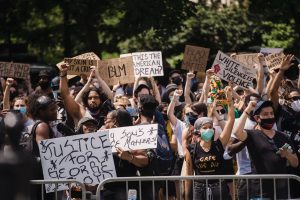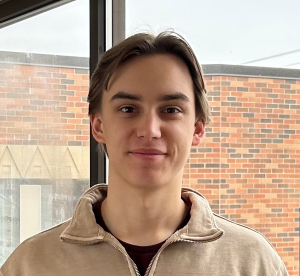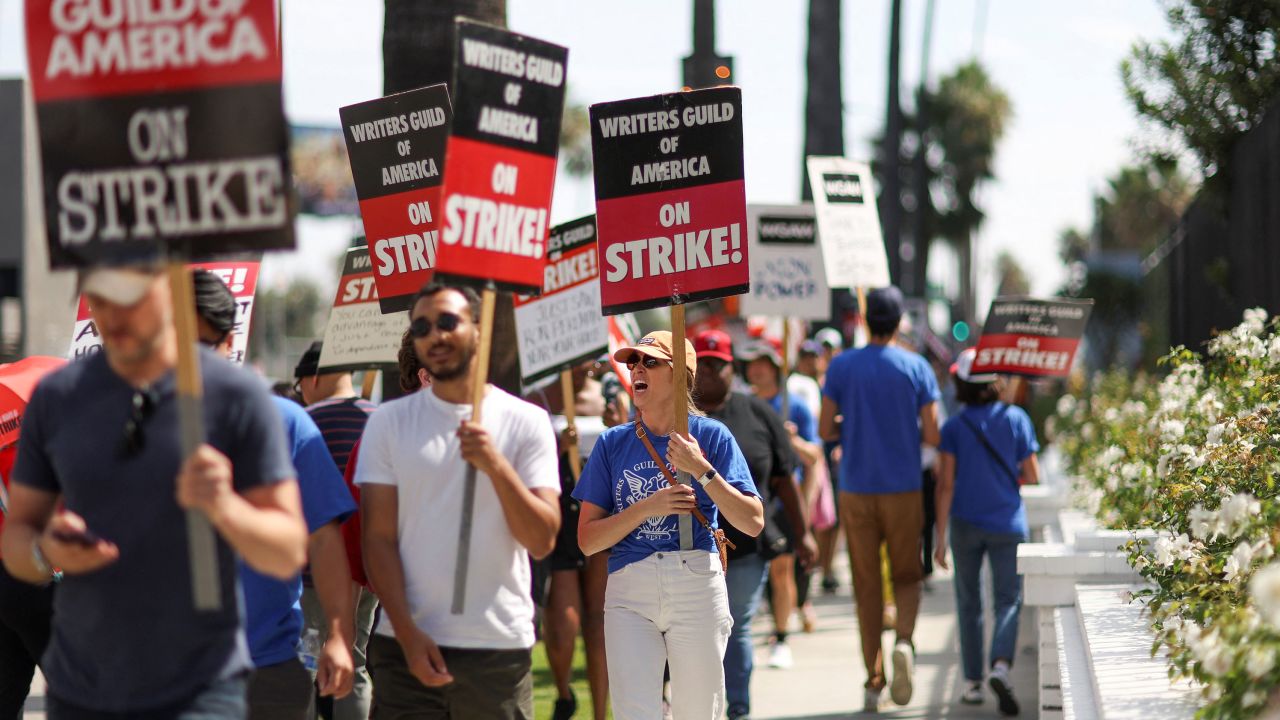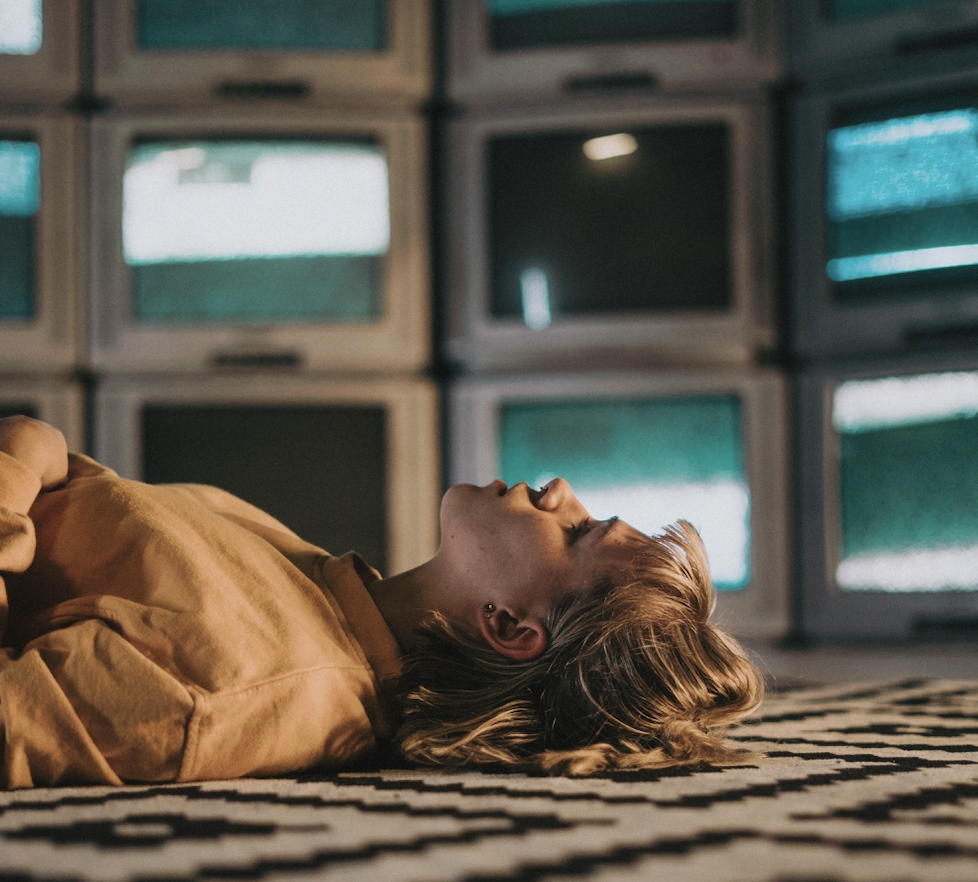Modern Day Marches

10K Foundation and George Floyd Protests
As protests take over the streets in downtown Minneapolis, voices exude catchy chants and the front lines are surrounded by a small militia holding AK-47s. So, who are the organizers of these massive marches? Recently, 10K, a foundation that was born from the event of the George Floyd death back in May, has been organizing peaceful marches to evoke racial inequality and change into the public.
When thinking of protests, some would remember the famous march in 1963 for freedom and jobs, where Martin Luther King Jr. made his famous, “I Have a Dream” speech, contributing to the Civil Rights act of 1964. We may also remember the March for Women in 2017, which took place in different cities around the country. An estimated 5.2 million women marched, being the largest in American history.
And today, we are seeing new marches getting attention in Minneapolis, but not so much for police and protestor brutality or riots running rampage through local businesses. Our attention is being captured by the 10K foundation’s peaceful and consistent protests roaming through Minneapolis since May. With event titles like, “Frontline March,” “No Bail,” and “Black 4th,” these marches have been deemed successful by some Minneapolis news media outlets, with no incidents that occurred in violence, looting, arrest, or rioting.
10K was formed while organizing a march within days after George Floyd was suffocated to death by Minneapolis police officer, Derek Chauvin. The march was May 29, and demanded the immediate termination of Chauvin, Tou Thao, J. Alexander Kueng, and Thomas Lane, who were the other officers involved. The march was led by the founders of 10K, Royce White, a former professional basketball player, and Tayo Daniel, the president of Aeterna, an advertising and marketing company for rising influencers. Together they have successfully gathered 8,000 people in this single march. Since then they have mobilized more than 50,000 people to march throughout Minneapolis, according to their website.
10K foundation is a nonprofit, whose mission is “helping communities preserve their freedom, justice, and access to the American dream,” stated on their website. For what their long-term goals are as of right now are, stand up against the immediate threat of injustice and tyranny in communities, aid in healing the trauma of communities, aid in the healthy growth of the communities, mobilize the Free People of America in ways that renegotiate terms of the social contract we hold with the United States, and help the Free People of America facilitate their vision of America’s future. All goals stated were founded on their website, 10kfoundation.org.
Protesting with Purpose
Invites on Facebook feed’s for the “Black 4th” march were new and started to get shared in late June. The “Black 4th” was a march bringing awareness that the Fourth of July is for independence, but that independence does not pertain to people of color.
As Daniel shouted through the intercom at the Black 4th protest, you could hear the passion behind the message they needed to convey that night, “The celebration, because we were not free, for all the voices that were silenced for so many years they could not teach us our history, we are having a silence march for them. That’s the reason why we decided to do a silence march; it’s for the fallen, for the Eric Garners, for the Breonna Taylors, for the George Floyds. So many, who were silent, we are marching for them.”
Daniel continued, explaining what a die-in protest is. As they stood in front of the Minneapolis Federal Reserve, he said, “For those of you who don’t know what a die-in is, when you lie on the ground, so many people risk their lives and lost their lives for your very freedom, so we’re doing this for them, there’s so many, so many slaves during the fourth of July were not free, they didn’t get to experience the celebration, they didn’t get to celebrate with their families, they didn’t get to go home and relax with their friends and their loved ones, they didn’t get to do any of that. That’s why we are doing this for them.”
As the crowd showed immediate attention to what Daniel was saying, they were silent, and listened to every word these fierce leaders had to say. White got up and shared his thoughts on the die-in at the Minneapolis Federal Reserve, “A lot of us are under the illusion once again that this is a social injustice, and we definitely face social injustice, but understand that America is the biggest corporation in the world. You guys, probably don’t know this, but this is the most exclusive building in Minnesota, there’s 12 of these in the entire country, this is where they keep all of your money, the Federal Reserve, and we’re coming here to do the die-in to let them know that we understand, that it’s money that has caused the shed blood, not just cops, that it’s their money, that incentivizes us to devalue human life.” The crowd cheered, then fell silent; you can only hear the small rumble of the many bodies moving as one as they laid down on the pavement in front of the Federal Reserve on Black 4th.
For the past two to three decades, protests were not events shown on the nightly news very much, it seems something of the past. America witnessed more marches in the 60s and 70s for civil rights. But with the death of Floyd, tensions had risen to an undeniable level of anger and sadness. How was rioting and looting contributing to the healing of the city? Residents of Minneapolis were stuck on the news and live feeds, but only to know what was happening in their neighborhoods and if they were safe.
Amongst the protestors was Andrew McCullough, a 32 –year-old that recently moved to Minneapolis from a rural area in Minnesota. McCullough was attending his first protest, which was with 10k for the Black 4th March. “I’ve always wanted to take part in social justice movements but living in rural northern Minnesota it was never really an option.” McCullough said. “I wanted to march with 10k to show my support for BIPOC in these times of social unrest. Police brutality, racial inequality, white privilege, these are all important issues in our society that need to be confronted. I wanted to be there to stand with them. It is our actions not our words that really matter.”
McCullough mentioned that he would absolutely encourage others to get involved in the community, like 10k marches, and do things about what they really care about. McCullough said he was committed to moving to Minneapolis despite the looting and violence, and was a decision he did not regret.
“Minneapolis is an awesome place. It’s so great to be in a location in which so many people share my beliefs. Joining with the marches before I moved allowed me to be a part of positive change in my community.” He said about living in Minneapolis since August of this year.
When asked about his experience with the 10K foundation’s Black 4th protest, McCullough said, “It’s hard to describe what it was like, it just felt like I was a part of something bigger, something important. To take part in an organization devoted to bringing about much needed change in our society was a deeply meaningful and unforgettable experience for me.” McCullough said he supports the protest 100% and hopes they continue.
Though some people were new to the marches, some Minneapolis residents felt it their duty to bring the awareness of social injustices to the city. Jenna Quast, 25, is a resident from Apple Valley but spends a lot of time in Minneapolis. The Black 4th March was Quast’s third march, stating she was on the I-35 Bridge the day the incident happened.
“It was very peaceful until we got on the highway and we all were going to take a kneel and on the other side of the bridge,” Quast said. “Everyone started running and one of the people in my group got lost, I panicked and was frantically looking for her! We didn’t know what was happening and we thought we were under attack and still till day I believe we were attacked.” Also Quast said it was peaceful before the semi-truck entered, which would indicate that the protestors were being disrupted by outside parties.
10K’s Impact
Quast felt that the protest is helping her make a difference in her community. “I think it was great how they had speakers, and shared testimonies displayed, it helped me in turn opened my eyes to wanting to protest and knowing more about the movement, the drive that they have to fight for justice and equality really moves you to the point of wanting to do something more.” Said Quast when explaining her experience with 10K.
10K may be a new organization fighting against racial injustice and working towards a future without inequality, but in a short time they are making an impact in our country already. The protests continue as White and Daniel stay committed to leading them. Daniel finished one of his speeches, saying, “We just have to wake up, we have to wake up, the eyes of justice have been blinded by the greed of a higher socioeconomic status and this affliction going uncured affects us all as a whole no matter what socioeconomic class you may be in. So, let’s put our fist up, for all the fallen, the people who died for injustice, the Eric Garners, the Breonna Taylors, the George Floyds,” as Daniel continues naming the people who have be wrongly killed by police, people from the crowd begin to yell out the names of others, he repeats after them, “the Mike Browns, Rayshard Brooks, Elijah McClain, Sean Bell, there’s so many to name.”
Though the people are fueled with anger of the injustices happening around the country, let this generation not forget about the people who were and continue to be oppressed, who live in fear for their lives walking down their street. If 10K is doing anything, it is teaching others how to stand up for those who can’t stand for themselves.
A Look Into 10K, a Foundation Making an Impact for Inequality





